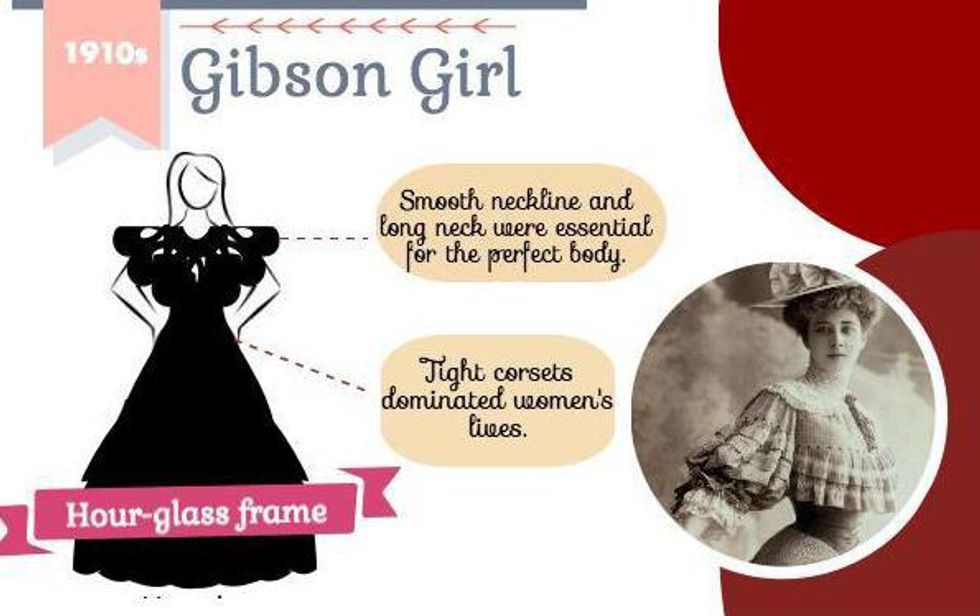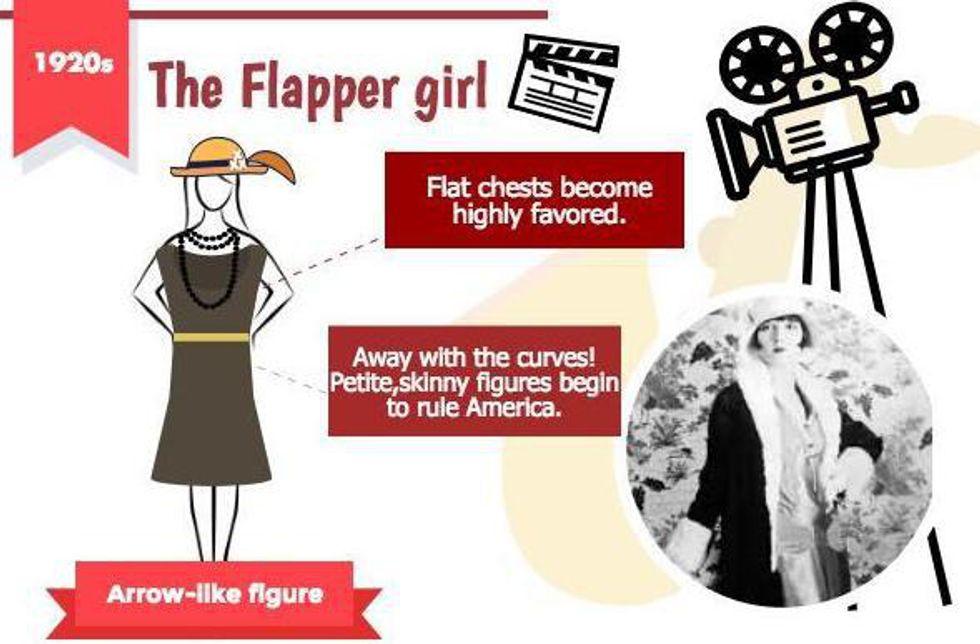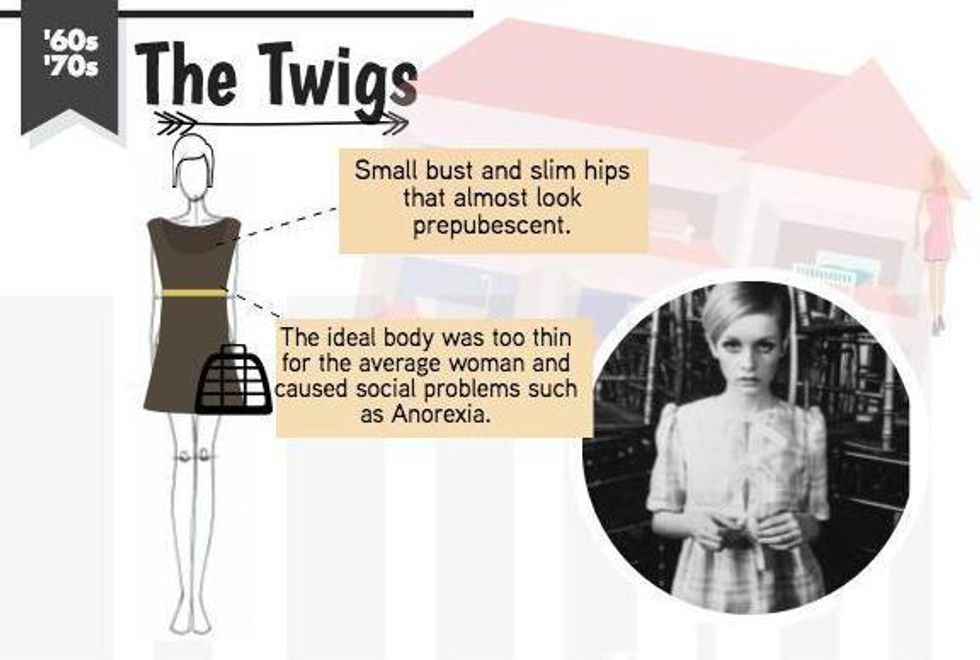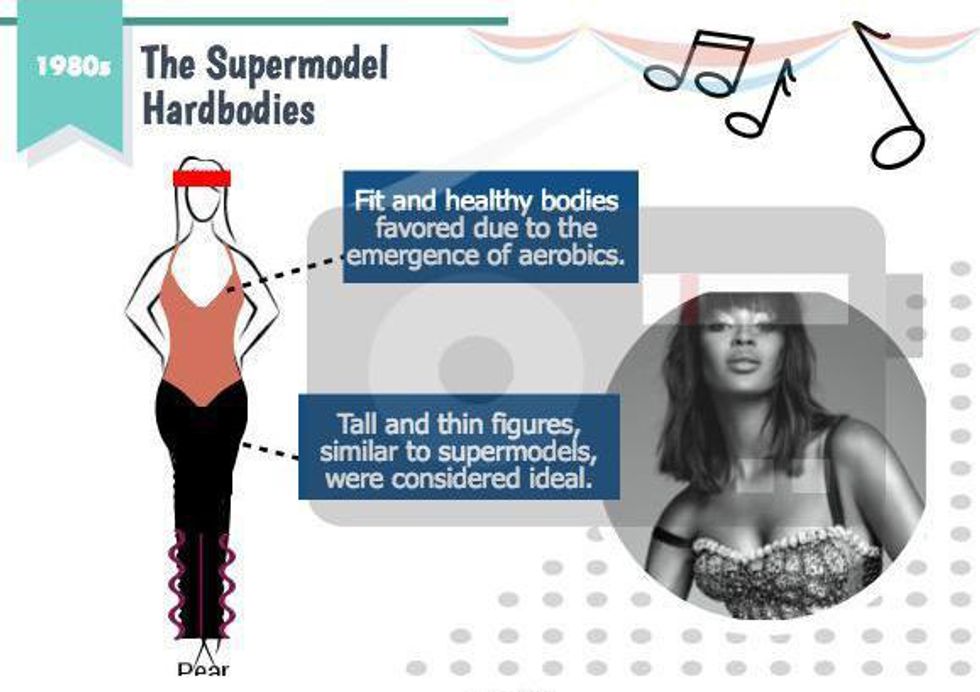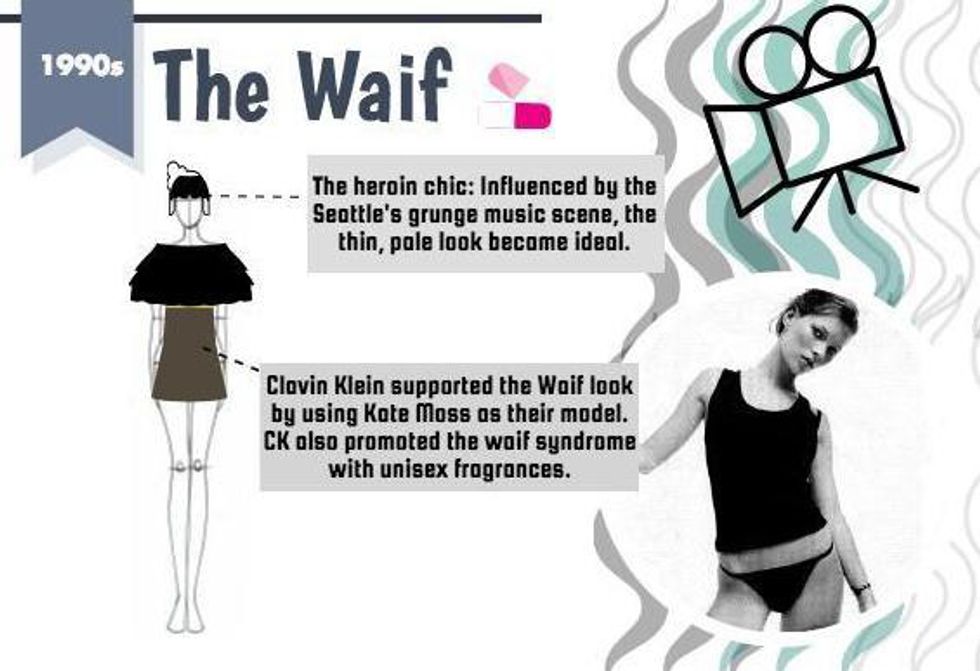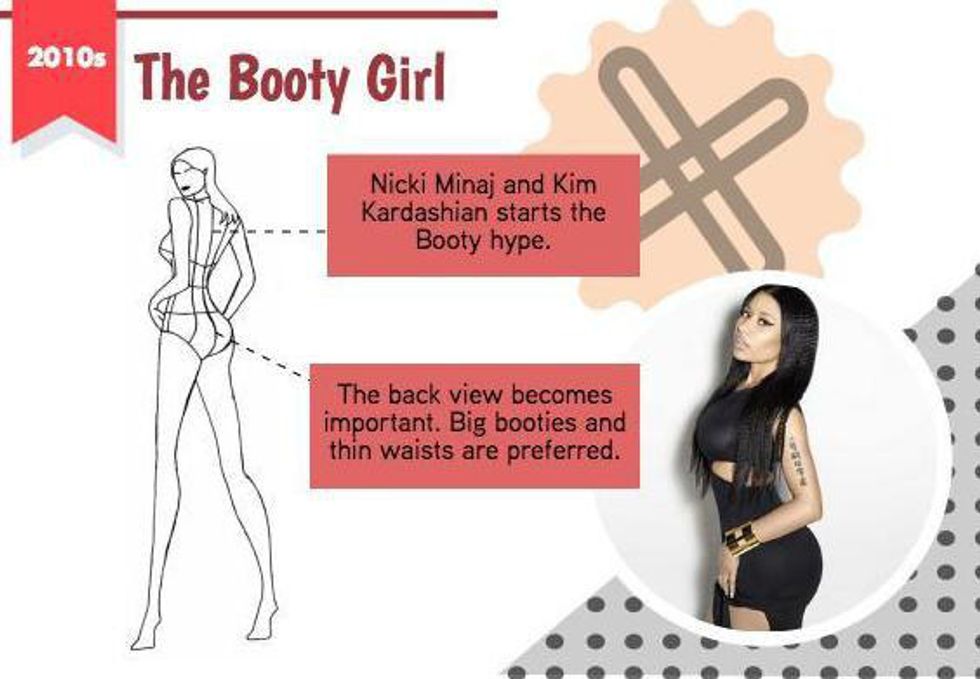We are constantly bombarded with advertisements that lure us into their "lose four dress sizes in just thirty days" promo, show us numerous before and after pictures, and claim that this pill or that Beyonce booty workout will definitely work. Everyday, we are pressured by the society and the media to conform to the strict beauty standards so that we can look "pretty." But what does it truly mean to be "pretty"? Big booties? Small waists? Small face? Does beauty even refer to something external? Beauty is highly subjective and varied throughout time and culture. Inspired by Greatist, I want to show how the "ideal body" changed throughout the past century in America and why you should set your own beauty standards instead of blindly agreeing with what the society defines to be beautiful.
1910s: The Gibson Girl
An era of tight-fitted corsets, the 1910s still had remnants of beauty standards from the Victorian era. The Gibson girl became the prototype of the ideal body during the 1910s. Her wide hip, tall frame, and big bust emphasized a woman's role as a fertility figure. Originally, the idea of the Gibson girl was actually a fictitious invention by Charles Gibson, an illustrator, who portrayed her as a very formal, dark and prim woman. Not much after that, models such as Camille Clifford brought the character to life and started the hourglass body shape hype.
1920s: The Flappers
After World War I, America entered the Roaring Twenties in which American women sought to express individualism and freedom through fashion and lifestyle. This era was in constant motion unlike the previous decade, and it welcomed all sorts of innovations and changes such as shorter hemlines that came up to the knees. Also, gone were the voluptuous women with decorum, and in were the petite, carefree women that lived today as if there was no tomorrow.
1930s: The Soft Siren
With the Great Depression taking over the United States, the lavish, all-that-jazz lifestyle went out of stock. Instead, women in this era emphasized practicality and traditionalism. They favored natural body lines with a hint of fertility and bringing the hemlines back down to the floor. In addition, bra cup sizing was invented in the 1930s, which consequently led many women to favor moderate breast lines instead of a flat, rectangular torso.
1940s: The Military Girl
Another World War erupts, and many women step out of their household jobs and delve into the workforce. Independence and education among women were highly valued in the '40s. Also, due to the effects of war, women during this era favored military-looks that emphasize angular shoulders, boxy features and tall figures instead of curvy hips and busts.
1950s: The Femme Fatale
Curvy, hourglass figures make a significant comeback during this decade, as photographed by infamous glamour model, Marilyn Monroe. The social norm during this era was that women should put on more weight to fit the ideal glamour body. Some companies even introduced weight gain pills to increase fat around the hip. Furthermore, there was a surge in beauty products during the '50s, which increased the amount of extra obsessed women trying to look their best when they go out.
1960s and 1970s: The Twigs
After the sexual revolution of the '60s, the ideal body type shifted from Monroe's glamour body to Twiggy's thin, petite and androgynous figure. This dramatic shift almost seemed to mimic the shift from the Gibson girl to the flappers. In order to achieve the doll-like Twig look, a lot of women had to take diet pills, which eventually made Anorexia Nervosa a major issue among young adults.
1980s: The Supermodel Hardbodies
For the first time, fitness began to play a vital role in women's lives with the introduction of aerobics in the '80s. In addition, supermodels were also introduced during this time and they naturally began to represent the ideal female body. Women aimed at achieving a lean but toned figure, with a long and thin body that retained some musculature.
1990s: The Waif "Heroin Chic"
This era is characterized by a resurgence of The Twig hype in the '60s and '70s, in which Kate Moss', petite and androgynous look begins to rule to world. The '90s eliminated the healthy look of the '80s; Rather, the era emphasized thin, bony figures and boxy frames that looked almost ghastly.
2000s: The Victoria's Secret Angel
With the debut of Giselle Bundchen, the era of a sexy, glamorous and fit body shape was back. Toned abs, lean legs, and Californian tans all became a part of the major checklist for a healthy body. However, unlike the '80s, the '00s favored "curves in the right places," achieved by intense workout.
2010s: The Booty girl
Nowadays it's all about the booty. Kim Kardashian and Nicki Minaj started the booty obsession among young females, emphasizing a voluptuous hip and flat waist for any shape or size.
The changing ideals of the female body show that body image is defined by society and is merely a trend. There is a great amount of almost ridiculous requirements to be met in order to have the "perfect" body for each era.
So instead of chasing after the long list of attributes that you have to satisfy (which is bound to change before you know it), why don't you love the one and only body that you are grateful to have? Self-confidence is always in stock even though the idealized perfect body is always changing. After all, beauty is only skin deep.




